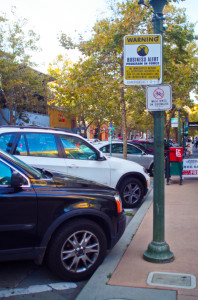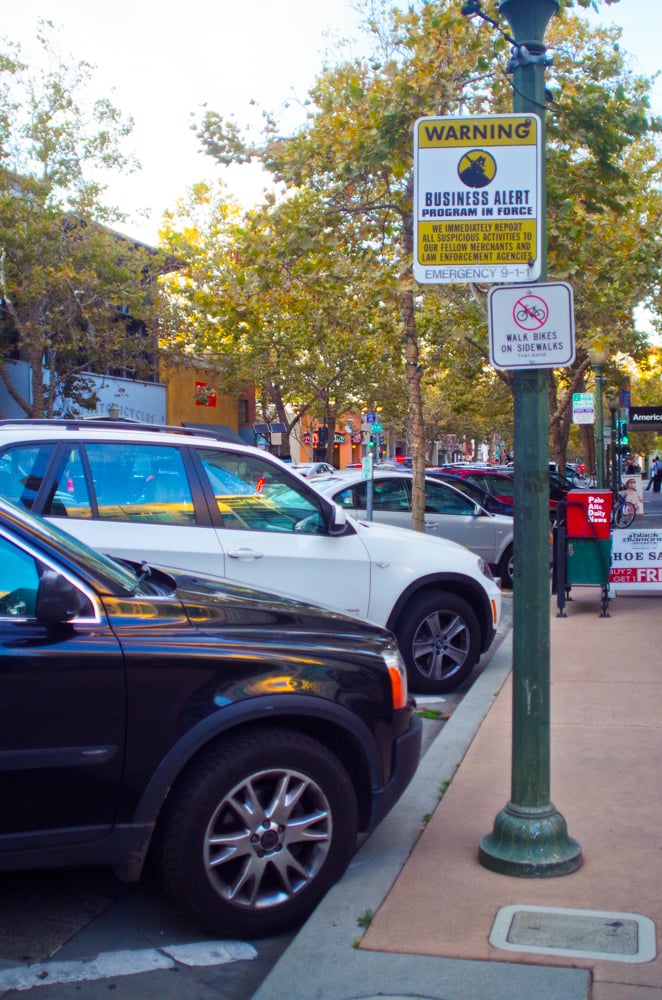
On Dec. 16 the Palo Alto City Council unanimously voted to delay the enforcement of the Vehicle Habitation Ordinance (VHO)—which prohibits the act of living in a vehicle within city limits—for up to one year or until an appellate court rules on a topically related Los Angeles case that may affect the local ordinance’s enforcement.
The ordinance originally passed on Aug. 5 and was scheduled to take effect six months after its passage to allow time for community outreach and education about the new law.
Stanford consulting professor William Abrams ‘76, an expert on constitutional law, is one of a number of attorneys who are representing citizens to be affected by the VHO and threatening to challenge the new ordinance in court.
In November, the team of attorneys wrote a letter to Palo Alto City Attorney Molly Stump alleging that the ordinance violates the constitutional rights of Palo Alto citizens. The letter requested a meeting with the city attorney to resolve the matter outside of court by Dec. 5. Stump obliged and the parties met to discuss the ordinance, out of which Stump agreed to recommend that the City Council to suspend enforcement.
Later that month in a memo to the City Council, City Manager James Keene recommended that enforcement of the VHO be stayed pending resolution of a Los Angeles case, describing the pending matter as “a case whose decision may provide further clarification regarding legal requirements governing ordinances prohibiting vehicle habitation.”
The Southern California case challenges a Los Angeles ordinance restricting certain activities that homeless people frequently participate in, such as holding a sign that asks for donations.
Abrams said that the judges for the 9th Circuit of the U.S. Court of Appeals who heard an oral argument over the Los Angeles case seemed unfriendly to the Los Angeles law.
“From what everybody sees from the way the three-judge panel received the arguments, they were quite hostile to the city in trying to defend the law,” Abrams said.
Keene also wrote in the memo that an additional period of public outreach prior to enforcement would help the Palo Alto City Council answer citizens’ questions about the scope of the new ordinance.
If the city of Palo Alto decides to enforce the ordinance after the suspension expires, Abrams said that his clients would not hesitate to file suit.
“If they revoke the suspension, we will be in court,” he said. “We will sue the city, and I am confident we will get an order that will enjoin any enforcement of [the VHO].”
Claudia Keith, Palo Alto chief communications officer, said that the city of Palo Alto believes the ordinance would withstand that challenge. However, she also said that the city may choose to make changes to the ordinance based on the outcome of the Los Angeles case.
“Depending on what happens in [the Los Angeles] court case, there may or may not be changes to the ordinance or the way it is approached,” Keith said.
Concerns of a developing trend
Chuck Jagoda, who came to Palo Alto four years ago, has spent the better part of his time in the city living in cars, with friends or on the ground. He said that while the ordinance might not directly affect him, he is alarmed by an apparent trend of recent laws unfriendly to homeless people in Palo Alto.
“If you listen to the words [Palo Alto City Council members] use, their big fear is that Palo Alto will become a magnet for homeless people,” Jagoda said. “That’s consistent with their ordinances over the years, with their ordinances making it illegal to camp along San Francisquito Creek, and no bathrooms in parks, and this ordinance here.”
“[If there is] not purposeful or intentional policy to drive away homeless people, there is at least an accidental, default or ‘de facto’— to use Jim Keene, the city manager’s favorite phrase—policy to drive out homeless people,” Jagoda said.
Keith emphasized that the ordinance was intended to be enforced only in cases in which residents have complained about an individual’s conduct.
“Our police officers are not going out on patrol looking for folks living in their vehicles,” Keith said. “The council decided to pass what is essentially a complaint-based ordinance. It really just provides our police officers with a tool.”
Jagoda was skeptical of the need for a new authority under which police officers can cite homeless people in case of a disturbance.
“The thing that’s worrisome is that this weapon—they call it a tool, I would call it a weapon—why would anyone think they needed this? I’m intimidated by policemen, period,” Jagoda said. “They don’t need any more weaponry as far as I’m concerned. I’m afraid of them now.”
A short-term solution
Advocates both for and against the VHO agree that the new law does not provide Palo Alto with the means to address the underlying reality of homelessness in the city.
“Our clients have been on waiting lists for shelters for years,” Abrams said. “Not months, but years. We don’t have the shelters available. So while society really needs to deal with the issue [of homelessness] and not just sweep human beings under the rug, the city of Palo Alto has enacted this law, which besides being unfair and really wrong, is unconstitutional.”
Both Keith and Abrams emphasized the importance of partnering with communities outside of Palo Alto to more effectively address the problem of homelessness in the city.
“As a city, we can’t solve it ourselves,” Keith said. “We’ve partnered with Santa Clara County. We are providing funding for case workers to help individuals find shelter.”
Keith said Palo Alto has committed $250,000 to work with the city of Santa Clara and other partners to help homeless individuals find housing.
Contact Sam Kurland at kurlands ‘at’ stanford.edu.
